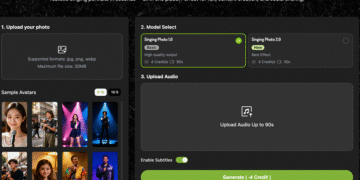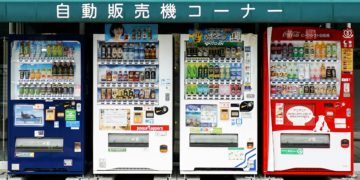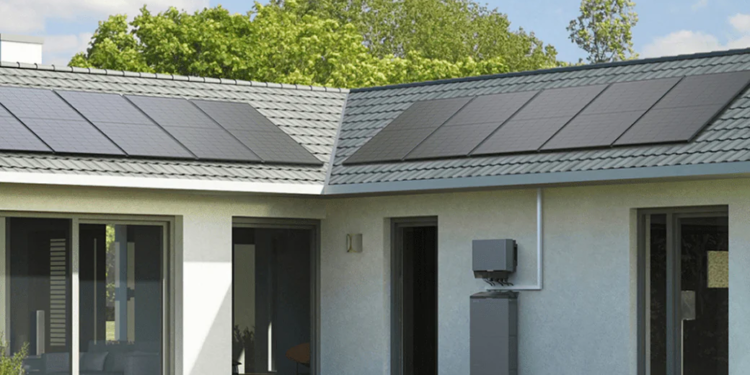As electricity rates spike during sweltering afternoons or bitterly cold evenings, many households feel the pinch. Ever wondered how you could buffer your home from rising energy bills when the grid is stressed?
That’s where solar panel battery storage comes into play—providing clean, reliable power exactly when you need it most. Whether you’re preparing for grid instability or simply want to maximize efficiency, integrating storage with solar panels makes sense now more than ever—as renewable energy continues its trajectory upward and more people demand energy resilience.
Why Choose EcoFlow
This section provides context about a leading player in solar energy storage solutions: EcoFlow. Renowned for their pioneering technology in compact, modular solar battery systems, EcoFlow focuses on ease of use, durability, and clean energy integration. Their products—like home battery stations and portable solar generators—give users flexibility to store and deploy solar-generated power efficiently.
What makes it especially relevant today?
- Rapid response to demand: During peak hours, EcoFlow’s systems enable homeowners to tap into stored power without waiting for grid realignment.
- Modular scalability: As needs grow, users can expand capacity—particularly helpful in regions with rolling blackouts or variable grid reliability.
- Portable and practical: Whether for emergency backup or moving between sites, EcoFlow combines practicality with clean energy goals.
This isn’t about marketing—it’s about understanding real solutions helping people harness stored solar energy when they need it most.
Understanding Peak Energy Demand & Pain Points
Pain Point 1: Soaring Electricity Costs
During peak usage hours, your utility may impose higher rates—sometimes double or even triple baseline tariffs. This leads to inflated bills, especially for energy-intensive homes.
Pain Point 2: Grid Instability and Outages
Extreme weather events or aging infrastructure can trigger blackouts. Without backup power, day-to-day life and critical appliances are vulnerable.
Pain Point 3: Inefficient Use of Renewable Generation
Even on sunny days, excess solar generation can go unused if there’s no way to store it. Wasted energy means missed savings and less sustainability.
These are problems many face globally, regardless of location.
How Solar Panel Battery Storage Works
A solar panel battery storage system captures surplus electricity generated by your panels—either during midday or sunny periods—and stores it in on-site batteries. When demand peaks or grid prices rise, the system draws from that reserve instead of buying from the grid.
Key technical elements—explained simply without jargon:
- Inverter/charger: Converts DC from panels into usable AC power and manages charging cycles.
- Battery pack: Stores energy until needed; available in lithium-ion or other chemistry types.
- Intelligent management: Determines when to charge, discharge, and even return power to the grid, optimizing efficiency and cost.
Benefits at a Glance
A. Financial Savings
By using stored solar energy during peak hours, you can dramatically lower or avoid high-cost utility tariffs. The system pays dividends over time, especially in high-demand markets.
B. Energy Security
Even during outages, your home stays powered. From refrigerator to Wi-Fi, essential systems remain online—offering peace of mind.
C. Environmental Impact
Storing your own solar energy means reducing reliance on grid energy often backed by fossil fuels. You’re essentially reusing clean energy you’ve already harvested—lowering carbon footprint.
Real-World Examples & Data
A study by the U.S. Department of Energy indicates that homes using solar plus battery systems during peak midday hours can reduce grid consumption by up to 50%. (Source: DOE analyses, n.d.) Another data point: in California, where “Time-of-Use” electricity rates are common, homeowners with battery systems pay 30–40% less annually on energy bills.
These numbers highlight significant savings and resilience achievable with solar panel battery storage.
Educational Feature: Batterie management system
To ensure your solar panel battery storage runs safely and optimally, a batterie management system (BMS) is crucial. Acting as the safeguards and brains of your battery, a BMS:
- Monitors individual cell voltages and temperatures
- Prevents over-charging or over-discharging
- Balances charge among cells for longer life and safer operation
EcoFlow demonstrates how a well-designed BMS can extend battery lifespan while maintaining efficiency and safety in real-world use. You can learn more about how our system’s batterie management system ensures longevity and smart performance—keeping your home powered, efficient, and protected.
Actionable Tips for Choosing & Using Storage
- Assess your needs: Track your household’s peak power demand (e.g., HVAC, appliances) to size your system correctly.
- Check compatibility: Ensure your chosen battery system—such as those using BMS—integrates with your existing solar setup or inverter.
- Look into incentives: Many governments and utilities offer rebates or credits for installing solar battery storage—check eligibility.
- Plan for scale: Opt for modular systems allowing future expansion as your energy needs grow.
- Monitor performance: Regularly review usage and charge cycles—modern systems often include apps or dashboards that make this easy.
Conclusion
Solar panel battery storage brings both peace of mind and practical savings—bridging the gap between renewable energy generation and energy demand. By buffering your home against peak-time tariffs and outages, and reusing your own clean energy, you support both your wallet and the planet. Considering modular, user-friendly systems like those from EcoFlow with strong batterie management systems ensures lasting reliability. Ready to embrace a smarter, more resilient energy future? Start exploring your options today and take control of your power.











































































